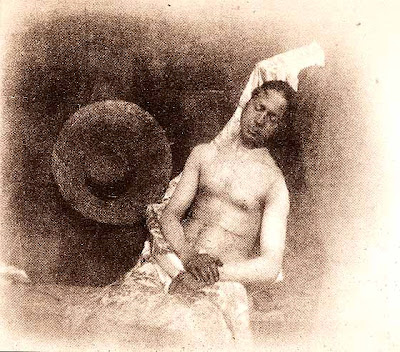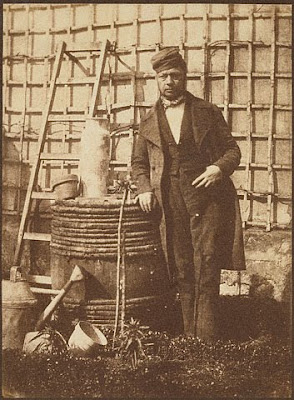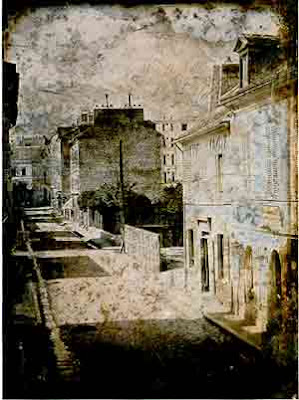


On the back of the 1840 photograph (1st image), a note penned in French:
"The corpse of the gentleman which you see on the other side is that of M. Bayard, the inventor of the process whose marvelous results you have just seen or which you are going to see. As far as I know, this ingenious and indefatigable researcher has been busy perfecting his invention for about three years. The Academy, the king, and all those who have seen his drawings, which he himself considered imperfect, have admired them as you are admiring them at this moment. This has honored him greatly and has earned him not a penny. The government, which had given far too much to M. Daguerre, said it could not do anything for M. Bayard, and the poor man drowned himself. O, the fleeting nature of human things! Artists, scientists, and newspapers have been concerned with him for a long time, and now that he has been exposed at the morgue for several days, nobody has yet recognized him or asked for him. Ladies and gentlemen, let us pass on to other things, for fear your sense of smell may be affected, for the head and the hands of the gentleman are beginning to rot, as you can see."*The drowned man was French photographer Hippolyte Bayard (1807-1887) and he was very much alive. The discoloration on his face and hands was not decomposition, but a summer tan - as much a process of the sun as the direct positive method of photography that he had invented a year earlier, and for which he had received no recognition. Instead, Louis-Jacques-Mandé Daguerre (1787-1851), the inventor of the eponymous daguerreotype, was basking in the limelight.
Bayard missed out on being considered the inventor of photography, but was photographing the streets of Paris (3rd image) in 1845 and posing for a self-portrait as a gentleman gardener (2nd image) in 1847. In fact, his career lasted another 4 decades. "Self-Portrait as a Drowned Man," a work that registers Bayard's bitterness and resignation, survives him as the 1st fictional photograph - 150 years ahead of the release of Adobe Photoshop, which makes hoaxing photos all too easy.
*Translated text quoted from A New History of Photography edited by Michel Frizot (Konemann, 1998).









No comments:
Post a Comment
You may add your comments here.